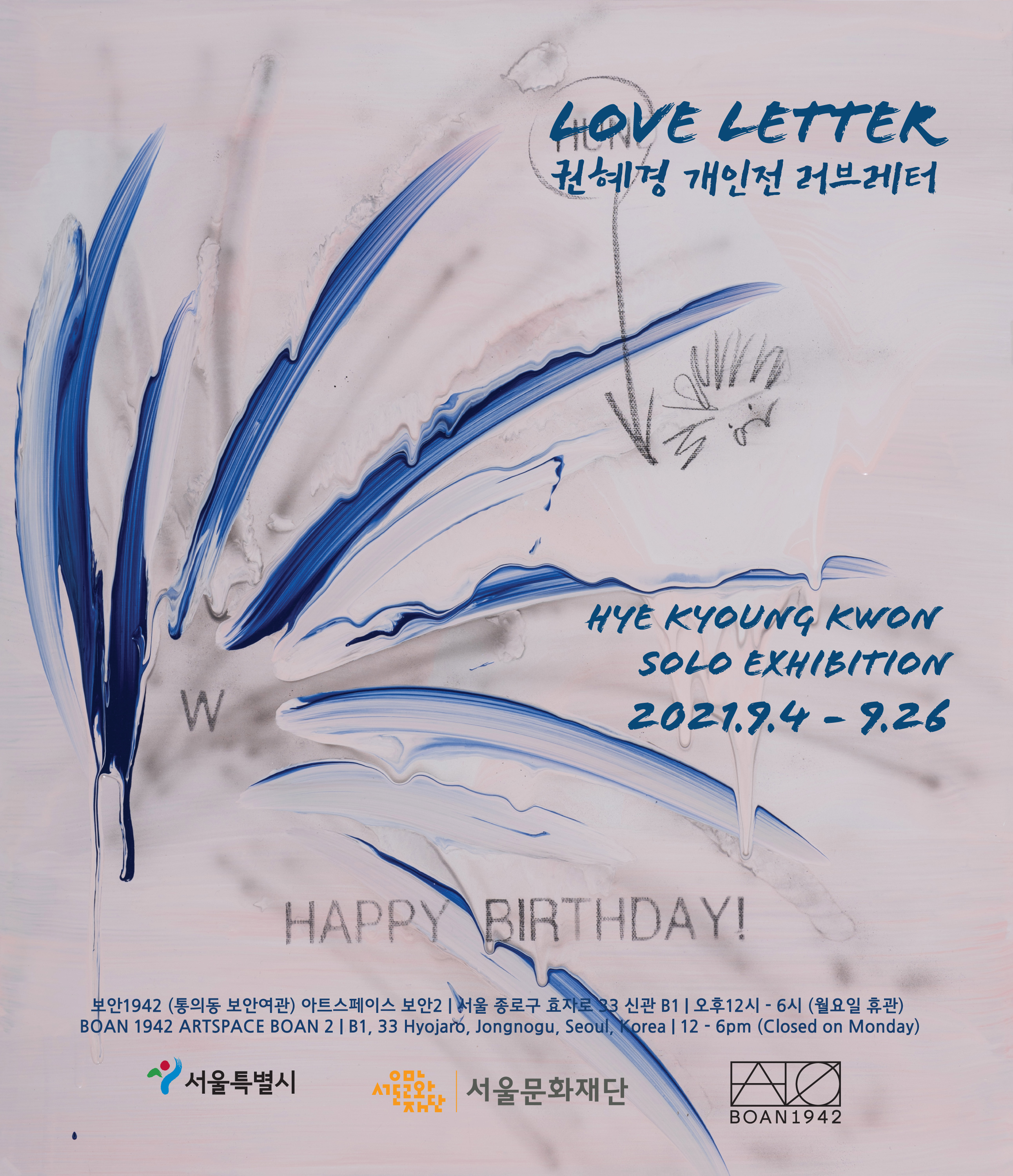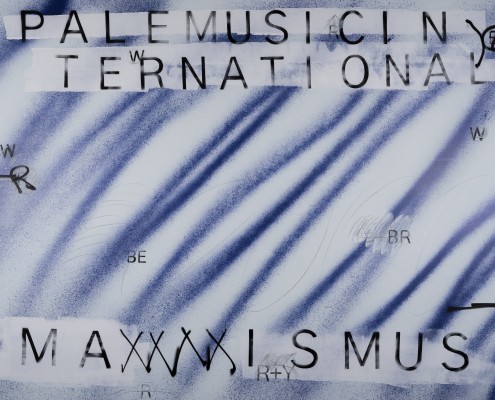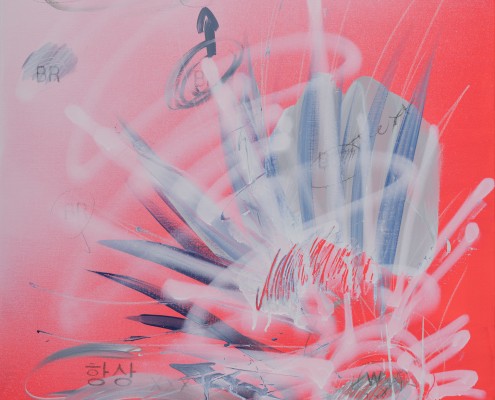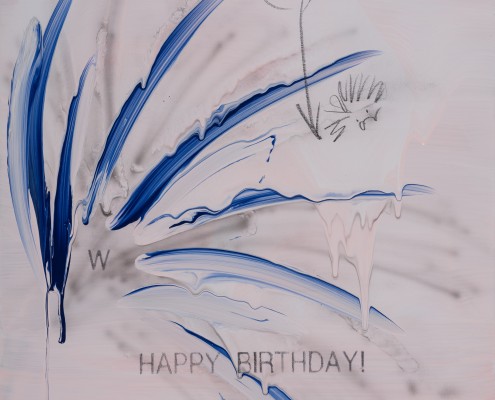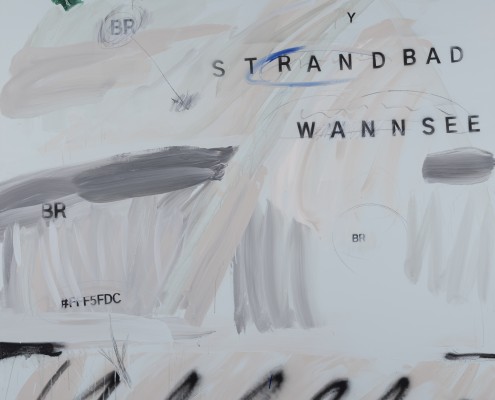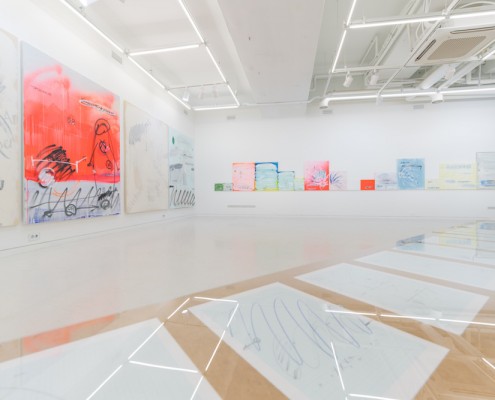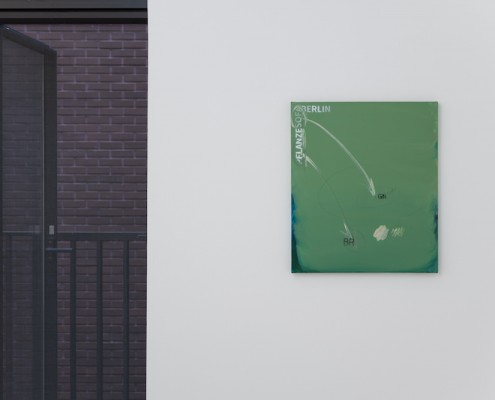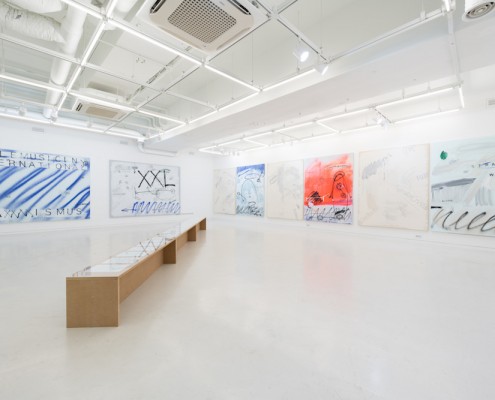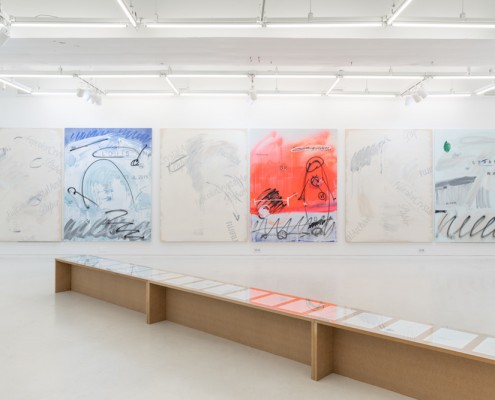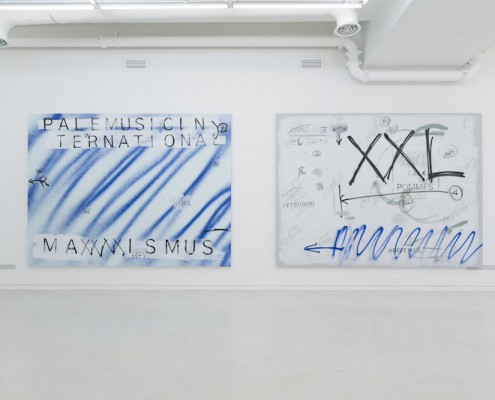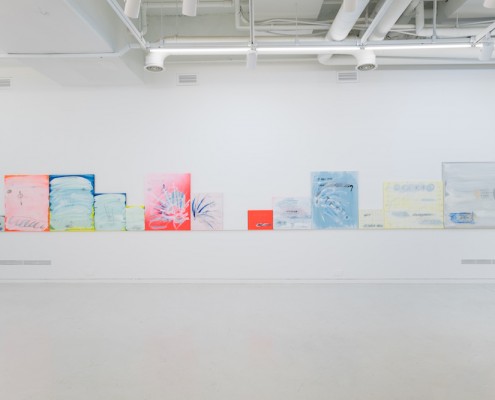권혜경 개인전
러브레터
- 일시: 2021. 9. 4 ~ 9. 26
- 장소: 보안1942(통의동 보안여관) 아트스페이스 보안2 (신관B1)
- 운영시간: 12:00 ~ 18:00
- 월요일 휴관
- 입장료 무료
- 전시서문: 서민정
- VR투어 제작: 실라스 퐁
- 후원: 서울특별시, 서울문화재단
Hye Kyoung Kwon Solo Exhibition
Love Letter
- Date: 2021. 9. 4 ~ 9. 26
- Venue: BOAN 1942 ARTSPACE BOAN 2 (B1)
- Opening Hours: 12PM – 6PM (Closed on Monday)
- Admission Free
- Text: Minjeong Seo
- Virtual Tour Production: Silas Fong
- Supported by Seoul Metropolitan Government, Seoul Foundation for Arts and Culture
러브레터 권혜경 개인전 전시서문 | | 글. 서민정
1-편지와 사진
우연히 꺼내 본 오래전 편지 한 통과 그 시기에 찍었던 사진 속 장면들에서 작업은 시작되었다. 그러나 더 정확히 말하자면 작업의 시작이라는 것은 ‘바로 이것으로부터, 이때부터’라고 말하기 힘들 때가 많다. 작가에게 작업은 꽝하고 서류에 도장을 찍은 후 실시되는 그런 업무의 성격과는 달리 색종이 띠를 엮어 만든 고리처럼 이전의 무수한 것들에 계속 이어지며 앞으로 나아간다. 어떤 확실한 계기나 탁월한 영감으로부터 시작되었다 하더라도 그것은 작가가 기회를 받아들이고 감지 할 수 있는 상태에 놓여 있었기 때문 일 것이다. 그렇게 이어나가는 고리의 두께나 색을 바꾸기로 마음먹기도 하고, 중간중간 다른 패턴의 고리를 연결하기도 한다. 지금 엮는 고리는 이전에 엮었던 고리에 어떤 식으로든 이어진다. 우연히 꺼내 본 오래전 편지와 사진들, 그것은 단지 작가의 일상에서 벌어진 하나의 사건이었겠지만 작가가 열중하며 이어가던 고리에 변화를 주고 싶은 마음이 들게 한, 작가가 어느 한 시기에는 이런 모양으로 엮어 가볼까 하고 고리들에 담을 이야기를 얻은 경험이 되었다.
2-그리움
‘그때 되게 재미있었는데.’
‘그때’는 2013~2015년경이다. 그즈음 큰맘 먹고 있는 돈 없는 돈 다 모아서 북유럽 여행을 했다. 처음 도착한 코펜하겐의 거리와 건물, 감각을 사로잡았던 타이포그래피와 길거리의 전단, 사물과 풍경을 사진에 담았다. 그때의 기록은 기록 자체가 목적이었다. 끌리는 대상을 기록한다는 간결한 목적은 몇 년이 흐른 후의 일상에 갑작스럽게 비집고 들어와 지난 시간 이어오던 작업의 고리에 자연스럽게 연결되어 안착한다.
과거의 상자 안에는 몇 통의 편지도 있다. 유학 시절 연인에게 받은 편지는 외로운 생활에 큰 위로가 되었다. 편지를 읽으며 서로의 안위를 확인하고 일상에 저미는 미래의 불안을 잠재웠다. 함께 있음을 느끼며 응원을 얻었다. 시간이 지난 후 다시 보게 된, 그때를 살아 냈던 증거들은 그때의 자신을 만나게 하고 지금의 자신과 대면하게 한다. 편지와 사진에 담긴 사소한 것들이 그때의 삶을 이어나가게 했고 지나치게 사소해서 아름다운 줄 몰랐던 것을 지금은 애틋한 마음으로 그리워한다.그리워하는 것은 그때의 기록을 통한 기억이고 그 기억 속 자신이다. 기록이 전해주는 것은 자유롭고 낭만적인 인물의 모습이었다. 달라졌기 때문에 알아차릴 수 있는 것들, 따뜻하고 긍정적이고 낭만적인 것을 향해 있는 모습이다. 그리고 모든 지난 시간에 대해 절대로 그것을 동일하게 반복할 수 없다는 것을 깨닫는다. 그리움. 이것을 느끼게 하는 그때를 박제시켰던 작가는 지난 시간에 대한 그리움과 더불어 근래 받은 편지를 통해서도 같은 마음을 느끼며 작업으로 풀어낸다.
3-추상
편지와 사진은 평면의 형태로 남겨진 기록물이다. 권혜경은 이들을 자신만의 방식으로 통역해 또 다른 평면의 이미지로 보여준다. 규칙은 있는 듯 없고, 재현하려는 것과 하지 않으려는 의지 사이에 회화적 감각과 행위를 몰아넣는다. 그토록 그리움을 느끼게 만든 편지와 사진을 온전히 하나의 이미지로만 감지함으로써 대상을 향한 감정과 정서보다 그리기 과정의 에너지 발산에 더 집중한다.
실제 편지 상단에 다소 어눌한 필체로 ’러브레터’라 쓰인 단어를 의미가 아닌 이미지로 인식 전환하면서 단어는 ‘그리기’로 표현되고 사진 속 대상(건물, 풍경, 꽃병, 의자 등)은 색의 기호와 획의 위치 정도로 자리한다. 구체적 이미지가 추상 이미지로 변환되는 과정에는 발산력이 다른 스프레이와 에어브러쉬, 스퀴지, 롤러, 테이핑과 스텐실 기법 같은 다채로운 도구와 재료 사용을 포함하여 익숙하게 사용해왔던 붓조차도 더욱 범위를 넓힌다. 표현의 도구로써 가능한 모든 것들을 채택하고 실험한다. 물감을 통째로 붓거나 스프레이 건으로 쏘는 행위는 작가의 손이 도구를 통해 화면에 직접 닿지 않지만, 순간의 에너지를 가감 없이 쏟아 낸다. 롤러로 밀고 붓으로 긋고 문지르고 다듬고 휘몰아치면서 화면에 가한 움직임을 고스란히 기록한다. 이런 작업 과정은 작가의 순간순간이 남긴 기록이다. 수정하기란 거의 불가능하기에 어려움이 있지만 어떤 시기에는 적절한 상태를 맞이하고 단숨에 이뤄내기도 한다.
권혜경은 지난 개인전 <통역된 그림들(2020. 스페이스 캔)>에서 이전과 다른 접근으로 기법적 변화를 시도하였고 본 전시 <러브레터>와도 연결된다. 이전에는 컨테이너를 컨테이너로 그리려는, 대상을 대상으로 보이게 재현하고자 하는 태도를 유지했다. 이는 작가의 의도이기도 하나 한편 제약을 가한 방식이기도 했음을 고백한다. 지금은 그 기준과 잣대를 없애고 심지어 무엇을 그렸는지 알든 모르든 무관한 그림을 그린다. 대상의 재현에서 거리를 두고, 그리기를 넘어서 자신의 행위에 집중하여 이미지를 만들어내려는 태도의 변화를 통해 그리기 자체에 온전한 재미를 느끼게 되었다. 그림이 완성되어 가는 과정에서 변해 가는 ‘화면’에 실렸던 무게가 ‘자신’의 상태로 이동한 것이다. ‘스스로가 어떠한가’가 더 중요해지는 날들이 되었다. 작업실에 남아 자신에게 과제로 준 것들을 해내기 위해 에너지를 쏟았던 것에서 스스로 이 그림을 그려 낼 수 있는 그때를 알아차리고 그때에서 멀어져 있을 때 편하게 붓을 놓고 작업실을 벗어날 수 있는 마음의 상태 역시 전과는 다른 점이다.
4-로스트 인 트렌슬레이션
<통역된 그림들(2020. 스페이스 캔)>에서 시도했던 이러한 방식은 ‘회화로 통역하기’이며 작가는 통역자의 역할을 수행한다. 통역하는 사람은 그때의 시점을 재생하고 그 대상(편지와 사진)이 건네주던 것을 행위로 전달하며 소통을 시도한다. 통역을 거쳐 나온 작품의 결과물은 구체적 대상, 즉 편지의 형식적 텍스트와 내용, 사진의 형식적 이미지와 이야기와는 매우 다르나 또한 완전히 다르다고 할 수는 없다. 이는 한 개인의 개별적 경험과 기억이 온전히 전달되거나 완전한 공감으로 이어질 수 없음을 시사한다 그때의 감흥과 지금의 . 감흥 사이에는 그동안 작가의 변화된 삶과 세세한 경험이 담기며 통역자 자신도 해석이 달라진다. 그때 중요했던 것들은 지금 다르게 보이고 그때 사소했고 무감각했던 것이 지금 더없이 소중하고 그리운 대상이 된다. 그 간극만큼이나 작품의 소재가 되었던 편지와 사진의 이미지는 무참히 변형되고 왜곡되어 통역된다.
직접 마주하지 않은 환경 속에서 착오는 더 많이 일어난다. 관객은 권혜경이 소재로 사용한 편지와 사진으로부터 차단되어 있고 작가는 그때로부터 멀리 와 있다. 우리는 구체적인 대상이 추상적인 결과물로 통역된 작품을 보면서 작가가 마주하는 세계를 이 간극을 통해 상상할 수 있다. 작가가 이 간극을 넓힐수록 불친절한 통역이 된다. 그러나 불친절한 통역을 통해 우리가 상상하는 범주가 구속되지 않을 기회를 얻는다는 점에서 한편으로는 친절하다. 원본과 통역된 회화 사이의 간극과 공백, 변이된 묘사의 거리만큼, 말로는 다 하지 못하는 개인의 경험과 기억이 존재한다. 이는 곧 관객에게로 치환되며 개별이 가진 기억과 기록이 훗날 다시 소환될 때 그 다름과 간극을 경험하는 것과 마찬가지다.
5-안부를 전하며
권혜경은 그림이 아니라 그림을 그리는 자신에게 집중하면서 오히려 강퍅한 삶에 여유와 낭만을 되찾는다. 그 과정에는 망설임과 두려움이 있지만 그러함에도 불구하고 시도를 해보며 그리기 자체의 즐거움을 회복한다. 작가가 즐겁게 그리든 그렇지 않든, 관객에게는 중요한 요소가 아니다. 그러나 그에게는 필요한 시간이었다.
<러브레터>는 그리움이다. 우연히 따뜻하고 긍정적이고 낭만적인 것을 향해 있던 과거의 자신을 만났고 그리웠다. 지금 그것을 그리워하는 자신을 알아챘던 순간이 다름 아닌 이번 작업의 시작이라 말 할 수 있을 것이다. 그때의 자신에 대한 그리움을 넘어, 그리기를 수행하면서 낭만적으로 되는 상태로 자신을 만들고, 낭만이라 느낄만한 모습으로 스스로를 회복시킨다. 그래서 이 작업은 그때의 대상과 지난 시간에 대한 그리움으로 향해있기보다 현재의 자신을 재생하고픈 욕망을 향해 있다. 이는 지나간 시간, 장소, 기억, 대상에 대해 그리움과 애정을 담아 떠난 것들을 애도하고 그것을 위해 기도하는 마음이기도 하다. 그것이 현재 자신을 돌보는 태도이고 살아갈 날들에 대해 가지는 희망과 다짐이기 때문이다.
Introduction
Love Letter / Hye Kyoung Kwon Solo Exhibition
Minjeong Seo
1. Letter and Photo
The work has started from one letter from the past found by chance and the images in the photo taken at that period. To be more accurate, the beginning of a work is often hard to be said ‘from this thing, from this moment’. Unlike other works that can be started immediately after we pressed down the seal on the contract, a work of an artist is endlessly linked to innumerable previous things to advance forward, like the long chain made with color paper loops. Even though a work has started from a precise opportunity or a great inspiration, maybe the artist was in a state where they can sense and embrace the opportunity. In this process, they decide sometimes to change the thickness or color of that chain, or even connect other chain with different pattern. The new chain is to be connected to the previous chains in any way. The old letter and photo that the artist found by chance – it might be just an event happening in her daily life, but it became an experience that inspired her to make some change to the existing chain on which she had been concentrating and provided her with a story that she may try to add on her chain someday in the future.
2. Longing
‘It was so fun at that time.’
‘That time’ was around 2013-2015. She made up a big decision and summed up all the money she had here and there, to go on a trip to Northern Europe. Copenhagen, the first destination. She took pictures of streets and buildings, typographies, street flyers, things and landscapes that fascinated her mind. The purpose of the recording of that time was the recording itself. Some years later, that simple purpose to record the attractive subjects suddenly squeezed into her ordinary days and nestled to get connected smoothly to the chain on which she had been working.
In the box of the past, some letters were also found. The letters from a loved one were a big consolation during the lonely days when she studied abroad. Reading those letters, they could make sure that each other is well and ease the piercing anxiety about the future. They could feel their mutual bond and support. Those proofs of the life of that time, found again after a while, let her meet the person who she was at that time and also face the person who she is now. The trivial things contained in the letters and photos helped her to continue the life of that time, and she could not realize the beauty of the trivial things then, which are fondly missed now. What she misses is the memory recalled by the recorded past as well as herself in that memory. The record witnesses a figure of a person who was free and romantic. It can be noticed now, because she has changed; she used to head for what is warm, positive, and romantic. Now she figures out that all the past can never be repeated in an exactly same way. Longing. The artist who preserved the time, which is now the object of longing, incorporated this longing in her work, along with the same longing that she felt through a letter that she received recently.
3. Abstract
Letter and photo are two-dimensional records. Hye Kyoung Kwon translates these in her own way and presents as another kind of two-dimensional image. The rule, seemingly existent, is not existent, and she puts together the pictorial sense and acts between the subject to represent and the will not to. She senses the letter and photo, which aroused such a big longing, only as an image, and focuses more on releasing the energy in the painting process, than on the emotion and affection toward the subject.
In fact, the word ‘Love Letter’ written on top of the letter in a clumsy handwriting is perceived as an image, not as a meaning; a word is expressed by ‘drawing’ and the subjects in the photo (building, landscape, vase, chair, etc.) are positioned as color code or place of stroke. In the process of the conversion of figurative image into abstract image, the usage of familiar brushes is expanded in a wider range, including various tools and materials such as sprays of different strength, airbrush, squeegee, roller, taping and stencil. Everything that can be used as a tool of expression is adopted and experimented. By pouring the entire can of paint or shooting the spray gun, the artist gushed out all the energy of the moment without touching the surface with her hands. Pushing on with a roller, dashing with a brush, scrubbing, trimming, and lashing, the artist records her every movement toward the surface as it is. Such working process is a record of her moments. The problem is that it is hard or almost impossible to modify, but sometimes just one shot achieves the goal if an appropriate state arrives.
In her last solo exhibition Translated Paintings (2020, Space CAN), Hye Kyoung Kwon attempted a technical change with different approach from the past, which is also related to this exhibition Love Letter. In the past, she used to keep her attitude to represent the container as a container, the subject as a subject. This is of course an intention of the artist, but also a method under restrictions, did she confess. Now she abandoned those standards and criteria and creates even paintings that she does not care whether viewers will recognize exactly what is the object painted on the canvas or not. Keeping distance from the representation of the subject, she got to focus on her act itself beyond the painting, changed her attitude of trying to make up an image, and so she came to find the absolute pleasure from painting itself. Although she used to lay the emphasis on the ‘canvas’ that is gradually changing during the process of completing a painting, now she puts the weight on the state of her ‘self’. Nowadays more important for her is ‘How is the state of myself?’. Furthermore, she used to stay in the workroom and devote her energies to carry out what others set as a task, while now she knows the right time when she can work on each painting, and apart from that right time, she can calmly put down the brush and get out of the workroom.
4. Lost in Translation
This method attempted in the exhibition Translated Paintings (2020, Space CAN) is a ‘translation by painting’, and the artist plays the role of a translator. A translator reproduces that moment, conveys by their act what the subjects (letter and photo) were delivering, and tries to communicate. The result of the work produced by the translation is quite different from the specific subject, in other words, the formal text and content of the letter, the formal image and story of the photo, but we cannot say it is completely different. It implies that it is impossible that a particular experience and memory of an individual are perfectly transferred or create a perfect empathy. Between the emotion of that time and that of now, there lie the change of life and detailed experience of the artist, and the translator’s interpretation can also alter the content. What was important at that time looks different now, while what was trivial and unimpressive becomes a precious object of longing. As much as the gap, the images of the letter and photo, which were the subject matter of the work, end up being horribly deformed and distorted in the translation.
In the environment that we did not face in person, the mistake occurs more often. The viewers do not have access to the original letter and photo that Hye Kyoung Kwon used as material of the work, and the artist also has come a long way from that time. As we see a work which is an abstract translation of a concrete subject, we can imagine the world the artist is facing, through this gap. The bigger this gap set by the artist becomes, the less kind the translation is. But through the less kind translation, we are allowed to imagine without restriction, which makes the translation ‘kind’ in a sense. As much as the gap, the blank, and the distance of the altered description between the original and the translated painting, there lie personal experience and memory beyond description. This is soon shifted to the viewer, and the gap is just the same as experiencing the difference and gap when any memory and record of an individual are brought back later.
5. Giving Regards
Focusing on herself who is painting, not on the painting, Hye Kyoung Kwon regained the composure and the romantic in her fastidious life. Despite of hesitation and fear on that path, she nevertheless keeps trying and recovers the pleasure of the painting itself. Whether the artist paints with pleasure or not, it is not an important element for the viewer. But it was a necessary time for her.
Love Letter is a longing. She encountered by chance the person who she was in the past, who was heading for what is warm, positive, and romantic, and she longed for that. The moment when she realized that she longed for it, was the very beginning of this work. Beyond the longing for the self of that time, she reset her self into a state of being romantic by performing painting, and recovered herself as a figure that could be felt as romantic. That is the reason why this work is toward the desire to revive who she is now, rather than toward the longing for the past subject and the past time. This is also her will to mourn the bygones and pray for them, based on longing and affection for the past time, place, memory, and object, because it is the attitude of taking care of the person who she is now and also the hope and resolution for the days to live.

